NAT10-mediated N4-acetylcytidine modification is required for meiosis entry and progression in male germ cells
- PMID: 35801907
- PMCID: PMC9638909
- DOI: 10.1093/nar/gkac594
NAT10-mediated N4-acetylcytidine modification is required for meiosis entry and progression in male germ cells
Abstract
Post-transcriptional RNA modifications critically regulate various biological processes. N4-acetylcytidine (ac4C) is an epi-transcriptome, which is highly conserved in all species. However, the in vivo physiological functions and regulatory mechanisms of ac4C remain poorly understood, particularly in mammals. In this study, we demonstrate that the only known ac4C writer, N-acetyltransferase 10 (NAT10), plays an essential role in male reproduction. We identified the occurrence of ac4C in the mRNAs of mouse tissues and showed that ac4C undergoes dynamic changes during spermatogenesis. Germ cell-specific ablation of Nat10 severely inhibits meiotic entry and leads to defects in homologous chromosome synapsis, meiotic recombination and repair of DNA double-strand breaks during meiosis. Transcriptomic profiling revealed dysregulation of functional genes in meiotic prophase I after Nat10 deletion. These findings highlight the crucial physiological functions of ac4C modifications in male spermatogenesis and expand our understanding of its role in the regulation of specific physiological processes in vivo.
© The Author(s) 2022. Published by Oxford University Press on behalf of Nucleic Acids Research.
Figures
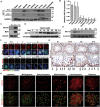
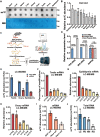
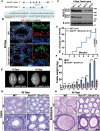
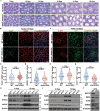



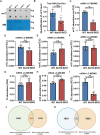
Similar articles
-
The role and mechanism of NAT10-mediated ac4C modification in tumor development and progression.MedComm (2020). 2024 Dec 4;5(12):e70026. doi: 10.1002/mco2.70026. eCollection 2024 Dec. MedComm (2020). 2024. PMID: 39640362 Free PMC article. Review.
-
Targeting N4-acetylcytidine suppresses hepatocellular carcinoma progression by repressing eEF2-mediated HMGB2 mRNA translation.Cancer Commun (Lond). 2024 Sep;44(9):1018-1041. doi: 10.1002/cac2.12595. Epub 2024 Jul 19. Cancer Commun (Lond). 2024. PMID: 39030964 Free PMC article.
-
NAT10-Mediated N4-Acetylcytidine of RNA Contributes to Post-transcriptional Regulation of Mouse Oocyte Maturation in vitro.Front Cell Dev Biol. 2021 Jul 30;9:704341. doi: 10.3389/fcell.2021.704341. eCollection 2021. Front Cell Dev Biol. 2021. PMID: 34395433 Free PMC article.
-
NAT10-mediated mRNA N4-acetylcytidine modification promotes bladder cancer progression.Clin Transl Med. 2022 May;12(5):e738. doi: 10.1002/ctm2.738. Clin Transl Med. 2022. PMID: 35522942 Free PMC article.
-
Emerging role of RNA acetylation modification ac4C in diseases: Current advances and future challenges.Biochem Pharmacol. 2023 Jul;213:115628. doi: 10.1016/j.bcp.2023.115628. Epub 2023 May 27. Biochem Pharmacol. 2023. PMID: 37247745 Review.
Cited by
-
Glucose homeostasis controls N-acetyltransferase 10-mediated ac4C modification of HK2 to drive gastric tumorigenesis.Theranostics. 2025 Jan 20;15(6):2428-2450. doi: 10.7150/thno.104310. eCollection 2025. Theranostics. 2025. PMID: 39990211 Free PMC article.
-
N-acetyltransferase 10 facilitates tumorigenesis of diffuse large B-cell lymphoma by regulating AMPK/mTOR signalling through N4-acetylcytidine modification of SLC30A9.Clin Transl Med. 2024 Jul;14(7):e1747. doi: 10.1002/ctm2.1747. Clin Transl Med. 2024. PMID: 38961519 Free PMC article.
-
N4-acetylcytidine of Nop2 mRNA is required for the transition of morula-to-blastocyst.Cell Mol Life Sci. 2023 Sep 28;80(10):307. doi: 10.1007/s00018-023-04955-w. Cell Mol Life Sci. 2023. PMID: 37768430 Free PMC article.
-
The role and mechanism of NAT10-mediated ac4C modification in tumor development and progression.MedComm (2020). 2024 Dec 4;5(12):e70026. doi: 10.1002/mco2.70026. eCollection 2024 Dec. MedComm (2020). 2024. PMID: 39640362 Free PMC article. Review.
-
CARF regulates the alternative splicing and piwi/piRNA complexes during mouse spermatogenesis through PABPC1.Acta Biochim Biophys Sin (Shanghai). 2024 Dec 11;57(4):656-666. doi: 10.3724/abbs.2024224. Acta Biochim Biophys Sin (Shanghai). 2024. PMID: 39696987 Free PMC article.
References
Publication types
MeSH terms
Substances
LinkOut - more resources
Full Text Sources
Molecular Biology Databases

